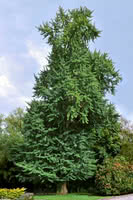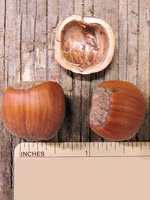Mon-Fri 9am - 5pm Mountain time
Ginkgo Biloba vs Andrew Hazelnut
Ginkgo biloba
Corylus heterophylla Het 1
NOT AVAILABLE THIS SEASON - MIGHT RETURN
NOT AVAILABLE THIS SEASON - MIGHT RETURN
The Ginkgo Biloba is regarded as one of the most distinctive and beautiful of all the deciduous trees, and has remained genetically unchanged for millions of years. Its beautifully fan-shaped leaves develop a clear yellow colour in fall. Graceful and attractive year-round, Ginkgo is the perfect conversation starter in your yard.
Andrew Hazelnut is a northern cultivar that is grown specifically for its cold hardiness. Typically, hazelnuts produce smaller nuts in colder climates, but for Andrew Hazelnut, this is not the case.
This hybrid variety is incredibly productive, growing medium sized nuts that ripen in late August. Pair with another Andrew or Aldara Hazelnut for cross pollination to occur.
The edible nuts can be eaten fresh, used in baking, and will make a beautiful hedge. Andrew Hazelnut is also eastern filbert blight resistant.
Note: You want more than one hazelnut to improve yields.
Ginkgo Biloba Quick Facts
Andrew Hazelnut Quick Facts
Toxicity: Uncooked nuts in large quantities

